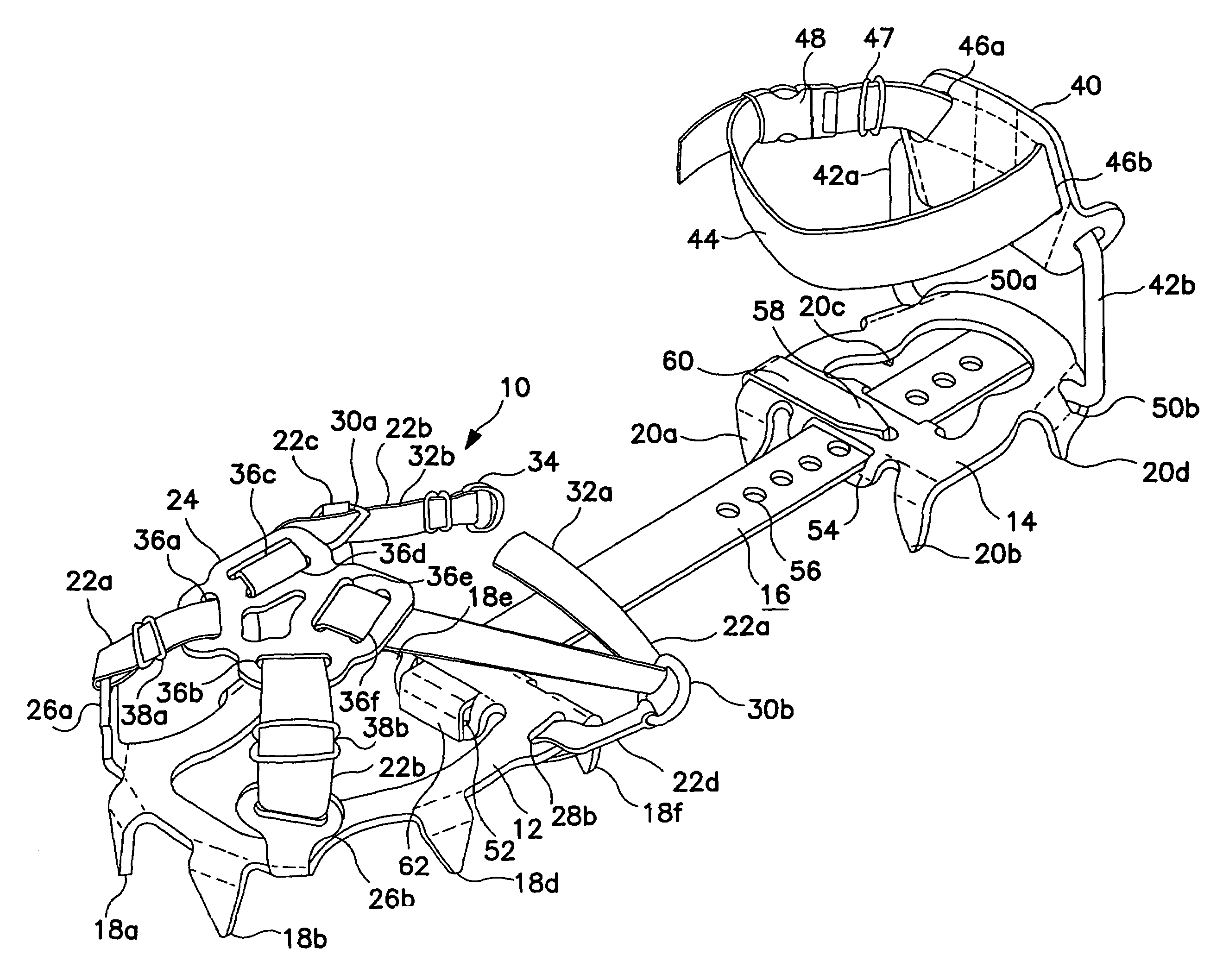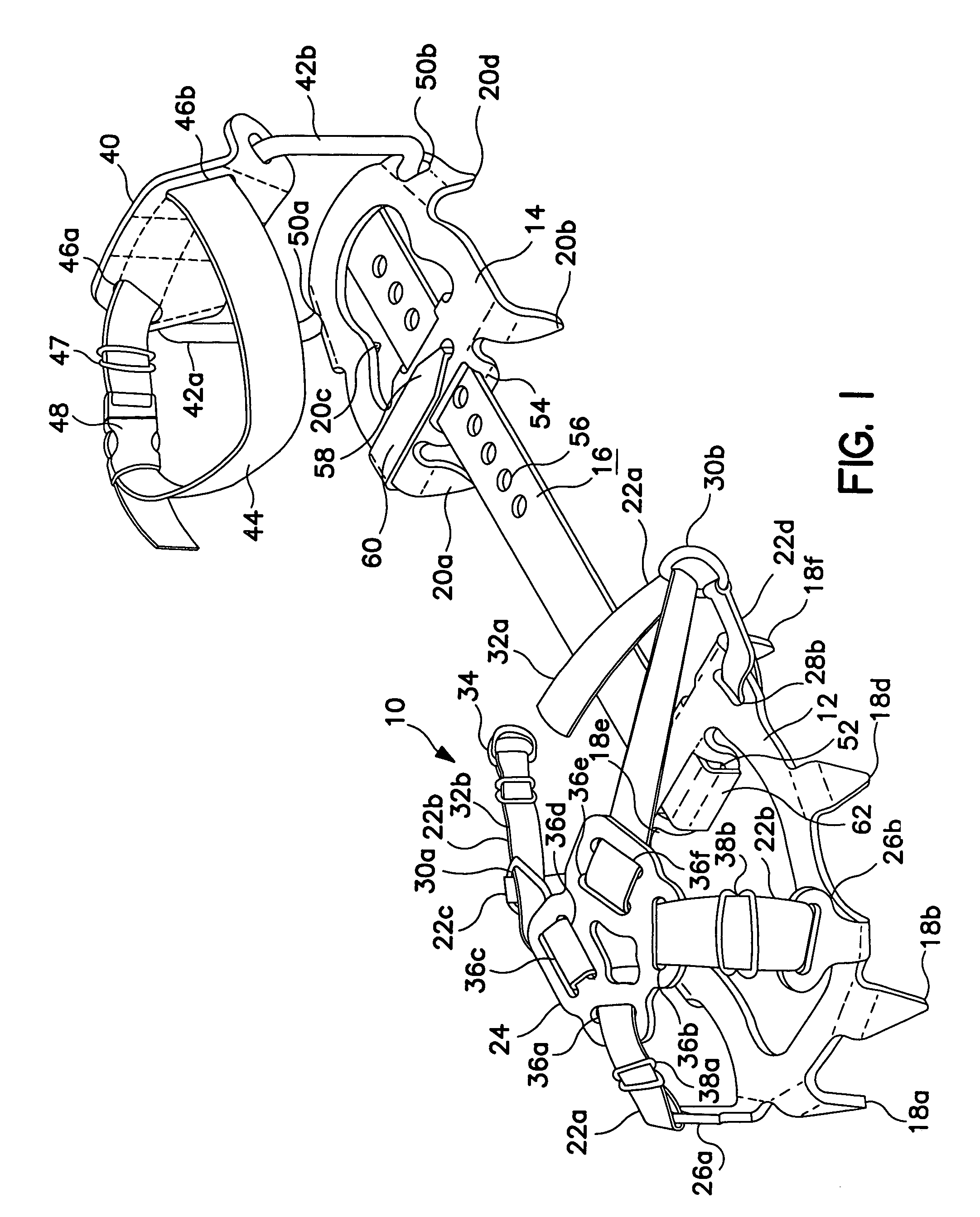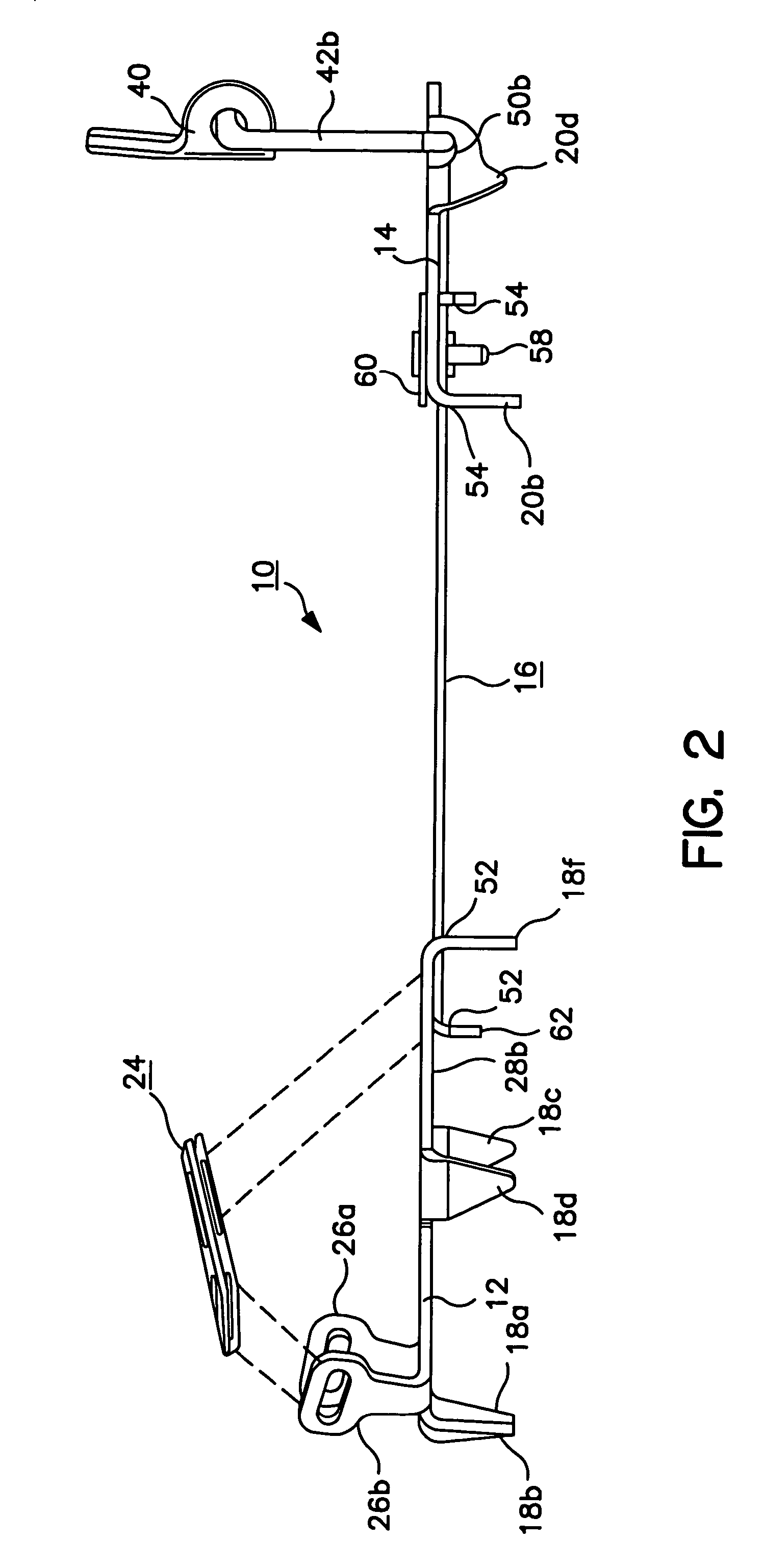Flexible traction system for common shoes
a traction system and common shoe technology, applied in the direction of fastenings, footwear, apparel, etc., can solve the problems of not being able to easily attach the straps to smaller and more flexible common shoes, the use of common shoes (such as street shoes and boots, flexible soled hiking boots and shoes, flexible soled winter boots, etc., to achieve the effect of being easily flexed
- Summary
- Abstract
- Description
- Claims
- Application Information
AI Technical Summary
Benefits of technology
Problems solved by technology
Method used
Image
Examples
example
[0077]A traction system of the present invention has been constructed in accordance with the design illustrated in FIGS. 1 through 10 in the following manner from the following materials:
[0078]Flat aluminum blanks for the toe piece 12 and heel piece 14 are made from sheets of aluminum alloy. Blanks can be made from 7075 aluminum (T6 or T0 temper) with a thickness of about 0.16 inch and can be milled or cut with laser or water jet. These blanks are formed in dies. The first die rounds over any burrs on the edges, the second bends the teeth and extender bar tabs down and front support tabs up. The third bends a “rocker” into the toe piece. If T6 temper is used, the blanks should be solutionized and quenched before forming.
[0079]The plastic strap guide 24 and heel cup 40 are milled from UHMW polyethylene about 0.09 inches and about 0.125 inches thick, respectively. They are heated in an oven then formed and cooled.
[0080]The extender bar 16 can be fabricated from a sheet of annealed hea...
PUM
 Login to View More
Login to View More Abstract
Description
Claims
Application Information
 Login to View More
Login to View More - R&D
- Intellectual Property
- Life Sciences
- Materials
- Tech Scout
- Unparalleled Data Quality
- Higher Quality Content
- 60% Fewer Hallucinations
Browse by: Latest US Patents, China's latest patents, Technical Efficacy Thesaurus, Application Domain, Technology Topic, Popular Technical Reports.
© 2025 PatSnap. All rights reserved.Legal|Privacy policy|Modern Slavery Act Transparency Statement|Sitemap|About US| Contact US: help@patsnap.com



